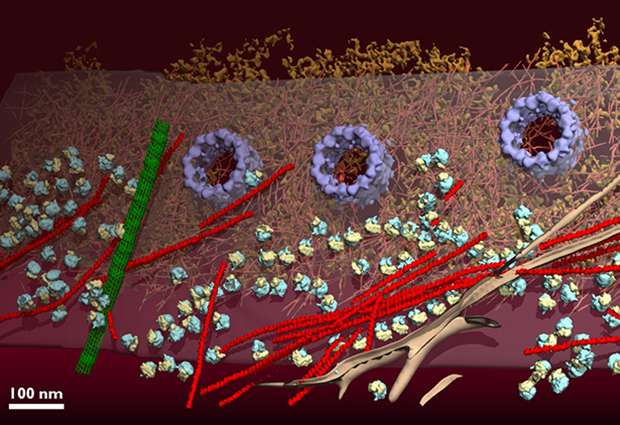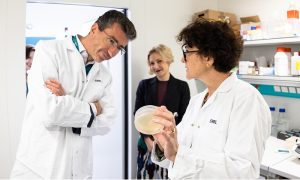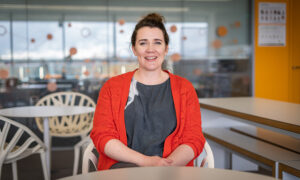
Welcome: Julia Mahamid
The Mahamid group brings together two fields in biology to explore the molecular organisation of the cytoplasm: the emerging field of phase-separated assemblies in cell biology and cellular cryo-electron tomography

Tell us a little about yourself.

I come from Haifa in Israel, a beautiful city where the slopes of Mount Carmel run down to the beach. I studied biology as an undergraduate at the Technion, then switched to chemistry for my masters and PhD at the Weizmann Institute. As both my parents are medical doctors, I had always imagined I would go into that practice. It was when I started studying biology for my bachelors that I discovered I preferred to explore basic biological complexity rather than the actual treatment aspect.
I came to the Max Planck Institute in Munich to do my postdoc, during which I developed methodologies to cut open frozen-hydrated cells without disturbing them, while optimising the imaging of the molecular landscapes inside.
What are your research interests?
Cellular cryo-Electron Tomography is an intriguing way to visualise macromolecular structures and their organization in three dimensions. Instead of extracting, purifying and studying a specific macromolecular complex, we try and look at these structures inside the cells, bridging structural and cell biology. Many different molecular species can assemble dynamically to form transient cellular organelles; being highly dynamic they are not physically secluded from the rest of the cytoplasm and can continuously exchange with their surrounding. This dynamic behaviour poses interesting questions in structural biology. This really is a completely new challenge, I see it as the future of structural cell biology.
What will you be looking for as you build your group?
I don’t expect people to come ready equipped with the expertise to perform this research. Really, I’m looking for ambitious people who are genuinely excited, curious and eager to learn.
I’ve had the experience during my education of moving to a different field, and it can be scary to go from something you know and are completely competent in to something you hardly know anything about; but this also opens new and exciting possibilities. I’m looking for people who are not afraid to venture into new fields and I hope to be able to bring those fields together and build something novel.
What are your goals for the Mahamid Group?
Phase-separated organelles are a new topic, they’re linked to disease, to developmental biology, to very basic functions in cells. I want to give a new perspective in this emerging area of cell biology. I hope that by providing a molecular resolution view of these organelles in situ, we will be able to explain what drives their assembly, what governs their disassembly and what happens in cases where they dysfunction.
Curiosity driven exploration … when we get new molecular views inside a cell in three dimensions, that’s just the start to asking many fundamental biological questions.
I’ve also come to EMBL hoping to contribute beyond the lab itself. These new methodologies present opportunities for many different types of research. I’m excited because I can see how my methodology could contribute to cell biology, to developmental biology, and also how the computational biology perspective here could be integrated to interpret these images.
What advice would you give to recent new hires?
It can be pretty overwhelming to begin with and what gets me through is to just take it one step at a time. There is a lot of support at EMBL. Don’t be afraid to ask around for advice and use the expertise, knowledge and guidance you are offered.
What inspires you?
Pure curiosity! I love basic science, it’s like solving a puzzle. You start looking at these molecular landscapes in a cell and it is just astonishing that you are one of the first people to have seen that and try to understand how these puzzle pieces come together to give rise to basic functions of life.
How would you describe your approach to research?
Curiosity driven exploration. I get excited about literarily seeing new things, that’s the drive, trying to understand how they are structurally organized. When we get these new molecular views in three dimensions, that’s just the start to asking many fundamental biological questions.
What is your philosophy for running your lab?
Cooperation. I’m an expert in my own field and I think it’s very important for driving good research to have multiple points of view, people coming from various disciplines and backgrounds. So when I teach people to be able to do what I do, I also hope that they will bring in their own knowledge and perspectives into these projects. I see a lab as a partnership.
And finally, what is the best advice you’ve received in your career?
Don’t fear change, but rather take the chance to venture in new and exciting directions. Basically, no fear!


